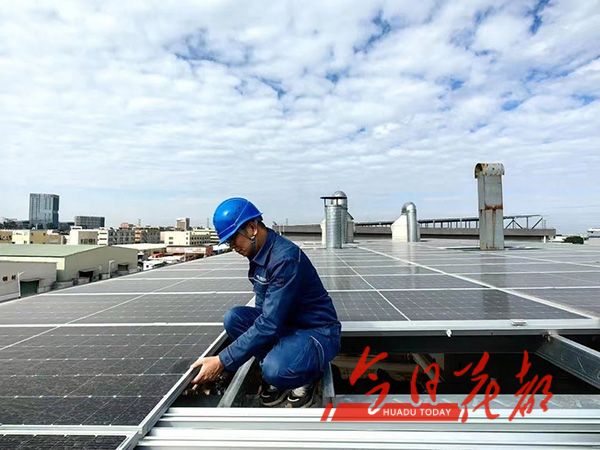Huadu Included in the First 25 County-level "Photovoltaic + Building" Application Pilot Areas of Guangdong

On August 27, the Working Plan of Guangdong Province to Promote the Pilot Project of County-level "Photovoltaic + Building" Application was officially printed and issued. A total of 25 counties, including Huadu District and Conghua District of Guangzhou, are selected as the first pilot areas. The goal is to achieve by the end of 2025 full coverage of all new parks in each pilot area by distributed photovoltaic system, and coverage of public institutions and public facilities wherever possible, and not less than 50 rooftop photovoltaic coverage of new public institutions.
Encourage well-positioned pilot areas to
Carry out a county-wide trial
The Working Plan aims to, through the "photovoltaic + building" application pilot project, promote the formation of a number of replicable and generalizable typical cases of Guangdong characteristics that can boost the improvement of urban and rural architectural styles, to explore new paths for the high-quality development of distributed photovoltaic in the counties, so as to accelerate the cultivation and development of new quality productivity, and promote green and low-carbon development in urban and rural areas.
After taking into account a comprehensive range of factors such as photovoltaic industry cluster and power grid capacity, 25 counties (cities, districts, and in the case of Dongguan, towns) were selected as the first batch of county-level "photovoltaic + building" application pilot areas in Guangdong Province, which include Huadu District and Conghua District of Guangzhou, Pingshan District of Shenzhen and Shenzhen-Shantou Special Cooperation Zone, Jinwan District and Doumen District of Zhuhai, Shunde District of Foshan, Nanxiong City of Shaoguan, Dongyuan County of Heyuan, Fengshun County and Jiaoling County of Meizhou, Boluo County of Huizhou, etc.
Pilot areas shall by the end of 2026
Cover all eligible buildings when it is possible
The Plan sets out the goals for the next three years. By the end of 2024, each pilot area shall complete a comprehensive survey of new public buildings, industrial buildings, and residential buildings, and eligible existing buildings, public facilities or structures, and build not less than 2 new "photovoltaic + building" demonstration projects, with an annual new installed capacity of no less than 50,000 kilowatts. The total installed capacity of new "photovoltaic + building" projects in all the pilot areas of the province shall not be less than 1.25 million kilowatts in 2024.
By the end of 2025, each pilot area shall form a construction and development model featuring government guidance, market-based operation, and win-win for all parties; and realize full coverage of all new parks by distributed photovoltaic system, and coverage of public institutions and public facilities wherever possible, and not less than 50% rooftop photovoltaic coverage of new public institutions; and build no less than 1,000 farmhouses with good demonstration effects (half of that number for pilot areas in Dongguan and Zhongshan), and the annual new installed capacity shall not be less than 70,000 kilowatts. The accumulated installed capacity of new "photovoltaic + building" projects in all the pilot areas of the province shall not be less than 1.75 million kilowatts in 2025.
All types of enterprises are encouraged to
Participate in investment, construction and management
The Plan requires screening for optimal development models. Each pilot area shall select the best project developers in accordance with laws and regulations, and encourages innovative modes of operation, maintenance, and profit making and distribution, so as to achieve a mutual win for all participants. All types of enterprises are encouraged to participate in investment, construction and management of the projects, as well as reasonable use of self-construction and self-use, leasing agreement, energy performance contracting and other methods are encouraged to reactivate idle photovoltaic development resources. It will be supported that rural collective economic organizations participate in project development with public building roofs, factory roofs, etc., and increase collective income.
The Plan encourages the adoption of "one-stop" parallel approval process to simplify project filing procedures. Project developers shall organize construction and acceptance of the projects in strict accordance with the relevant national regulations and technical standards.
